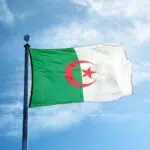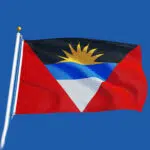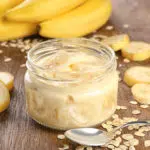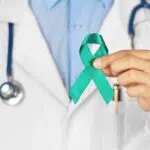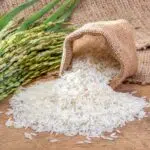Traditional and Alternative Health Care Month is observed in November every year in the Philippines. This month recognizes the importance of traditional and alternative medicine to Filipinos in providing essential health care. This is valuable to people who do not have access to hospice care and immediate nursing aid, specifically to locals in rural regions. This was declared in Republic Act No. 8423 or the Traditional and Alternative Medicine Act of 1997. This defines traditional and alternative health as a culmination of knowledge, skills, and health care practice not confined to biomedicine.
History of Traditional and Alternative Health Care Month
Before traditional and alternative health care became a legitimate industry in the Philippine health sector, its cultural origins root back in folk medicine and western medicine systems. The demand for these practices was due to the low-income families’ financial constraints who couldn’t afford hospice care. Some religions also prefer faith-based healing over scientific-based methods, which even garnered folk medicine a wider following.
Folk medicine in the Philippines was particularly popular during the Spanish regime from 1568 to 1898 when people used plants and herbs as medicines. This was when there were no authentic establishments that practiced medicine to treat people, so locals became innovative and resilient and resorted to alternative treatments.
Throughout the 20th century, faith healers that include ‘manghihilot,’ ‘mangtatawas,’ and ‘albularyo’ became prevalent throughout the decades. These practices have been deeply ingrained in the culture of Filipinos in terms of access and effectiveness.
By 1997, the Republic Act No. 8423, also known as the Traditional and Alternative Medicine Act of 1997, was formally declared to highlight and celebrate traditional medicine culture among Filipinos. This includes the legitimization of herbal medicinal products such as soaps, food supplements, vitamins, and nutrition-enriched food as valuable commodities in modern Filipino medicine.
As of today, at least ten medicinal plants are endorsed by the Department of Health of the Philippines as effective antidotes to cure illnesses or improve health. These include ‘akapulko,’ ‘ampalaya,’ ‘bawang,’ ‘bayabas,’ ‘lagundi,’ ‘niyog-niyogan,’ ‘sambong,’ ‘tsaang gubat,’ ‘ulasimang bato,’ and ‘yerba buena.’
Traditional and Alternative Health Care Month timeline
The Spaniards introduce plant-based medicinal practices to Filipinos.
Throughout the decades of the 20th century, religion-based healing becomes deeply ingrained in Filipino culture.
The Republic Act No. 8423 is formally declared to legitimize traditional and alternative healthcare.
A webinar event with the theme ‘The relevance of Traditional and Complementary Medicine on the COVID-19 Pandemic’ is hosted by the Philippine D.O.H.
Traditional and Alternative Health Care Month FAQs
What is a ‘manghihilot?’
A ‘manghihilot’ is a Filipino profession that uses massage therapy to cure illnesses and promote spiritual healing.
What is the Philippine Traditional Medicine Program?
The Traditional Medicine Program is a Philippine-based healthcare program that was founded in 1992 by the D.O.H. to promote the efficient and safe use of alternative medicine.
How does an ‘albularyo’ cure illnesses?
An ‘albularyo’ is a Filipino faith healer that uses shamanism, incantation, and herbal medicine to cure illnesses and improve one’s health.
How to Observe Traditional and Alternative Health Care Month
Share articles about traditional medicine
The purpose of Traditional and Alternative Health Month is to raise awareness of the importance of traditional medicine to Filipinos. Share scholarly articles about medicinal plants and herbs that could help other people’s illnesses.
Educate yourself
Fraud is prevalent in traditional medicine. It is always important to educate yourself and learn to be vigilant in determining the legitimacy of herbal products.
Buy your friends an herbal soap
Giving herbal soaps as a gift is a good gesture for birthdays, house warmings, or anniversaries. Purchase online and surprise them with package delivery. Don’t forget to include a note!
5 Interesting Facts About Traditional Medicine
The rise of health supplements
The demand for health supplements in the Philippines grew by 40.35% in 2011.
Traditional Filipino medicine in the international market
At the moment, multinational companies are investing to expand internationally to sell herbal medicines and plant-based products.
The ‘healthy lifestyle’ trend
The trend toward a healthy lifestyle contributed to the rise of traditional medicines and alternative healthcare products over the last 20 years.
The wonders of bitter gourd
Bitter gourd is a Filipino vegetable that’s known to help prevent diabetes, coughs, burns, and scalds.
The popularity of sambong
Sambong is a plant-based medicine widely used by doctors and healthcare professionals to treat kidney stones.
Why Traditional and Alternative Health Care Month is Important
They’re affordable products
We want to give everyone access to healthcare and medicine as much as possible. Traditional and Alternative Health Month offers families of all classes the knowledge and accessibility to herbal medicines.
It epitomizes the Filipino culture
Known as a resilient race, traditional medicine, and alternative healthcare is a form of every Filipino’s innovation and resourcefulness. This month is a celebration of that inspiring characteristic.
It eradicates the stigma of alternative medicine
The stigma behind alternative medicine still exists even today. This month helps raise awareness of the legitimacy and effectiveness of herbal medicines. Professional doctors promote them.
Traditional and Alternative Health Care Month dates
| Year | Date | Day |
|---|---|---|
| 2025 | November 1 | Saturday |
| 2026 | November 1 | Sunday |
| 2027 | November 1 | Monday |
| 2028 | November 1 | Wednesday |
| 2029 | November 1 | Thursday |







